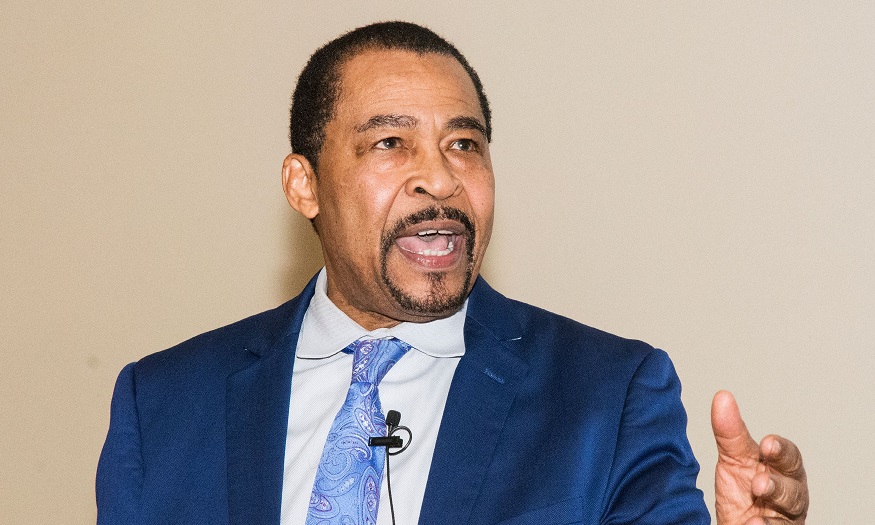Chancellor Pagano’s latest town hall focused on future goals and initiatives for UWT campus
Chancellor Pagano had several highlights to share during his Feb. 28 town hall meeting. His talking points included the UW Tacoma’s campus current enrollment statistics, progress with the five-year strategic plan ‘Charting Our Course’ and further explanation on the current draft of the UWT Aspirational Statement. During the town hall, Pagano also laid out his long list of goals for several different aspects of campus — like academic, culture and equity initiatives.
To start off his town hall, Pagano showcased a few different statistics he had shared with the Board of Regents, including that 93 percent of UWT students come from Washington state, and that 77 percent come from the South Puget Sound area. Another statistic Pagano shared was that 56 percent of current students are first-generation college students, with first-generation being defined as neither parent having graduated with from college with a degree.
A portion of the town hall was dedicated to updates on the UWT strategic goal. The five-year plan, now into its third year, has a list of 63 initiatives covering six impact goals: community, culture, equity, growth, scholarship and students. Some of the groups and projects being worked on right now include the South Sound Alliance, the First Gen Initiative and a project to expand study abroad opportunities and engagement.
“If somebody doesn’t look at what’s next, we’ll get stagnant,” Pagano said as he explained the importance of the strategic plan. “We’ll kinda taper off and get average [sic] … You don’t just want to be ‘okay,’ we want to stretch ourselves.”
Pagano also took the time to share his results from the UW ARC 360 assessment. The UW ARC 360 is a comprehensive evaluation that can be voluntarily requested by any UW employee. There are different competencies which are measured depending on your position, and all data is gathered from evaluations done by the people you choose. Based on responses from UWT personnel such as deans and vice-chancellors, Pagano’s strengths include integrity, communication and governance and leadership, while the biggest opportunities for his growth are in increased collaboration, innovation and leading change.
To wrap up his presentation, Pagano discussed the plans and goals he has for the future of UWT. He stressed, however, that these were his personal goals and that any and all plans must go through the correct channels of governance and be decided upon together with the stakeholders. For enrollment, Pagano hopes to increase the number of international and out-of-state students, as well as have total student enrollment increase to 7,000 by 2025.
“I was really hit over the side of the head when I first got here because the late Debra Friedman had that initiative ‘7-in-7,’ and it was 2013 when she started that, and she wanted 7,000 students here by 2020, which would be next fall,” Pagano said. “People seemed to not like that, and really told me that we need to halt … Here I am now, on stage saying ‘I’d like to be 7,000,’ but at least its 2025 not 2020, and we are preparing ourselves, hopefully.”
Other initiatives Pagano has hopes for is seeing all academic programs elevated to “school” status, secure funding for two new engineering programs and continue building faculty support. For programmatic-related goals, he hopes the UWT will gain Carnegie Classification, as well as start on the next five-year plan. In terms of his equity goals, Pagano hopes to complete a campus climate survey and expand the Center for Equity and Inclusion and its programs.
Budgeting goals included building up a reserve for UWT’s funds and expanding upon auxiliary enterprises to help build that reserve up. Finally, Pagano hopes to increase the amount of facilities to accommodate the growing campus size, as well as place more UW markings around the campus’ boundaries in a seamless manner. Plans for expanding parking spaces and accommodating the increase of student enrollment were also discussed.
“It should be, though, that as we increase the student population, we increase the income to the university, [and] we are deliberate about putting parking to match that,” Pagano explained. “Other things we can do is our transportation plan [and] do things to encourage people to not bring a car to campus … that is a part of our parking plan too.”




